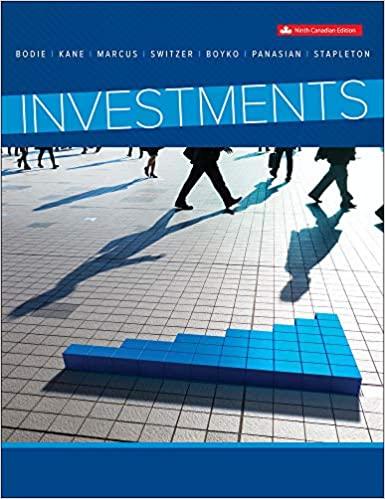1. Create a second valuation of Project A and Project I. This should measure the sensitivity of the project as reflected by a 10% reduction
1. Create a second valuation of Project A and Project I. This should measure the sensitivity of the project as reflected by a 10% reduction in price. Evaluate both projects according to the following valuation method:
Net Present Value of Discounted Cash Flow (use WACC number (11.49%) for discount rate). Provide a synopsis evaluation of each project and provide a clear recommendation of which project management will accept for its capital expenditures budget based on textbook decision rules.
2. Create a third valuation of Project A and Project I. This should measure the sensitivity of the project as reflected by a 10% reduction in sales volume. Evaluate both projects according to the following valuation method:
Net Present Value of Discounted Cash Flow (use WACC (11.49%) for discount rate). Provide a synopsis evaluation of each project and provide a clear recommendation of which project management will accept for its capital expenditures budget based on textbook decision rules.
Project A

Project I

A B F H E Initial Project Scenario Inflation Rate $ 20.00 $10 2% Tax Rate 40% 70,000 20.0% 100,000 32.0% 65,000 19.0% 70,000 12.0% 65,000 11.0% 55,000 6.0% Price Variable Cost Units sold Depreciation Rate Required Return Salvage Value Initial Cost Installation Cost Increase in NWC Fixed Cost 9.49% $ 150,000 $ 2,000,000 $ 130,000 $ 250,000 $ 200,000 0 Sales Variable Cost Fixed Cost EBITDA Depreciation EBIT Tax Expense Net Income 1 2 3 5 $1,400,000.00 $2,040,000.00 $1,352,520.00 $1,485,691.20 $1,407,161.81 $1,214,488.88 $700,000.00 $1,020,000.00 $676,260.00 $742,845.60 $703,580.90 $607,244.44 $200,000.00 $ 204,000.00 $208,080.00 $212,241.60 $216,486.43 $220,816.16 $500,000.00 $816,000.00 $468,180.00 $530,604.00 $487,094.47 $386,428.28 $426,000.00 $681,600.00 $404,700.00 $255,600.00 $234,300.00 $127,800.00 $74,000.00 $134,400.00 $63,480.00 $275,004.00 $252,794.47 $258,628.28 $29,600 $53,760 $25,392.00 ' $110,001.60 ' $101,117.79 ' $103,451.31 $44,400.00 $80,640.00 $38,088.00 $165,002.40 $151,676.68 $155,176.97 Operating Cash Flow $470,400.00 $762,240.00 $442,788.00 $420,602.40 $385,976.68 $282,976.97 Non-operating Cash Flow $ (2,130,000) Net Working Capital $ (250,000) $ 250,000 Year 0 Year 0 Year 1 Year 2 Year 3 Year 4 Year 5 Year 6 $ (2,380,000) $ 470,400 $ 762,240 $ 442,788 $ 420,602 $ 385,977 $ 532,977 $ (1,909,600) $ 1,232,640 $ 1,205,028 $ 863,390 $ 806,579 $ 918,954 Internal Rate of Return 7.54% Net Present Value $ (129,875.05) Payback Period 3.51 Profitability Index 0.95 B D E F G H $ Initial Project Scenario Inflation Rate 2% Tax Rate 120.00 $65 40% 21,000 20.0% 55,000 32.0% 44,000 19.0% 28,000 12.0% 25,000 11.0% 11,000 6.0% Price Variable Cost Units sold Depreciation Rate Required Return Salvage Value Initial Cost Installation Cost Increase in NWC Fixed Cost 13.49% $ 30,000 $ 2,000,000 $ 250,000 $ 100,000 $ 500,000 0 - Sales Variable Cost Fixed Cost EBITDA Depreciation EBIT Tax Expense Net Income 1 2 3 4 5 $2,520,000.00 $6,732,000.00 $5,493,312.00 $3,565,658.88 $3,247,296.48 $1,457,386.66 $1,365,000.00 $3,646,500.00 $2,975,544.00 $1,931,398.56 $1,758,952.26 $789,417.77 $500,000.00 $510,000.00 $520,200.00 $530,604.00 $541,216.08 $552,040.40 $655,000.00 $2,575,500.00 $1,997,568.00 $1,103,656.32 $947,128.14 $115,928.48 $450,000.00 $720,000.00 $427,500.00 $270,000.00 $247,500.00 $135,000.00 $ 205,000.00 $1,855,500.00 $1,570,068.00 $833,656.32 $699,628.14 ($19,071.52) $82,000 $742,200 $628,027.20 $333,462.53 $279,851.26 ($7,628.61) $123,000.00 $1,113,300.00 $942,040.80 $500,193.79 $419,776.88 ($11,442.91) Operating Cash Flow $573,000.00 $1,833,300.00 $1,369,540.80 $770.193.79 $667,276.88 $123,557.09 Non-operating Cash Flow $ (2,250,000) Net Working Capital $ (100,000) $ 100,000 Year 0 Year 0 Year 1 Year 2 Year 3 Year 4 Year 5 Year 6 5 $ (2,350,000) $ 573,000 $ 1,833,300 $ 1,369,541 $ 770,194 $ 667,277 $ 223,557 $ (1,777,000) $ 2,406,300 $ 3,202,841 $ 2,139,735 $ 1,437,471 $ 890,834 Internal Rate of Return 36.25% Net Present Value $ 1,438,496.99 Payback Period 1.97 Profitability Index 1.61








